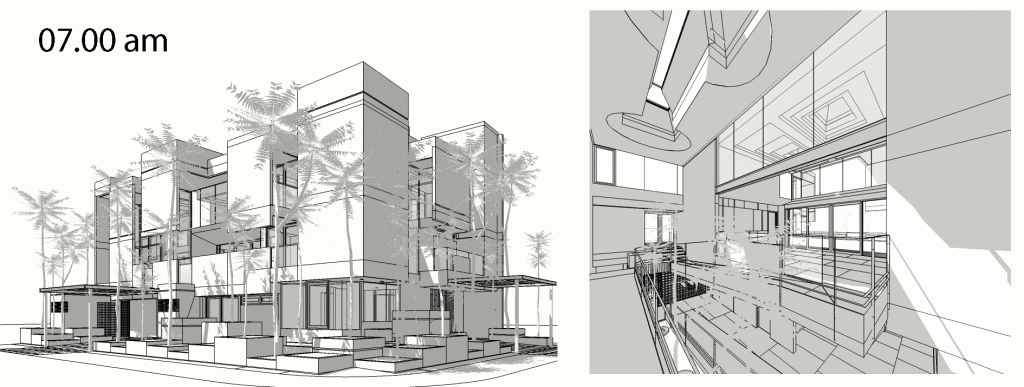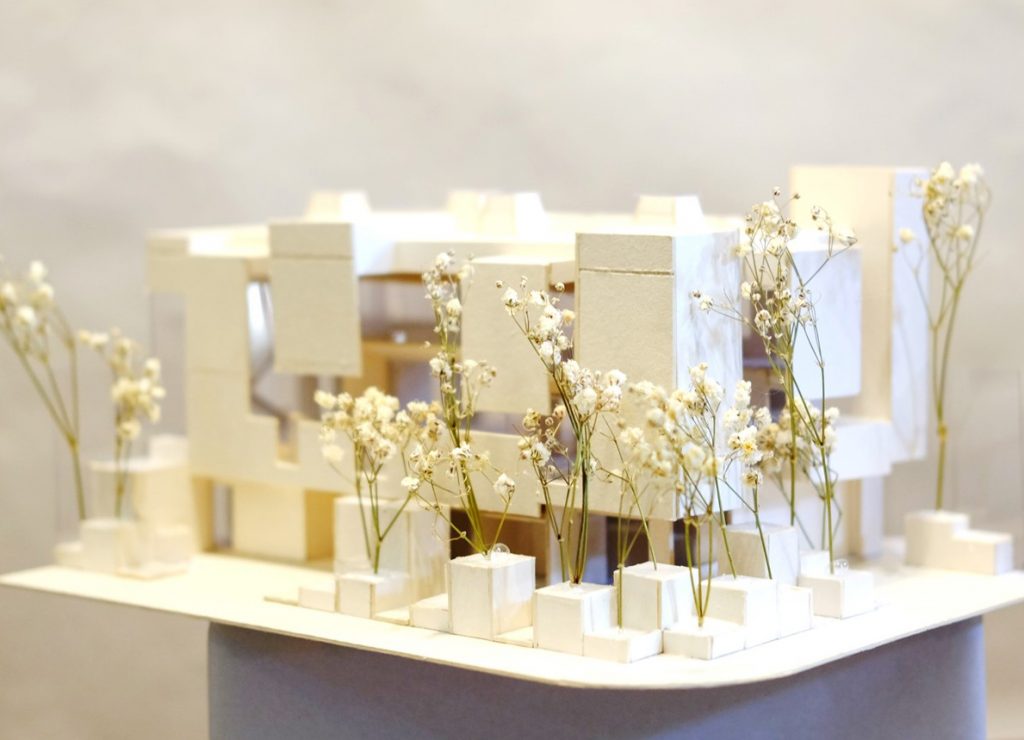



















Intrigued by the big question on how to adapt tropicality in postmodernism’s sprawling urban context, this project was meant to be an empty canvas of experimentation on how we can apply basic tropical passive design in an uncommon manner.
The Passive Design Lab is a prototype of how a simple idea can bend and dictate how the space is arranged. The basic premise is to reduce the interior’s micro climate by 4 Celsius degrees, while maintaining humidity and air velocity while all the active windows were closed. The project employs multiple overlapped void spaces ensure the natural ventilation works accurately, gentle ramp were chosen as vertical circulation method as it was also served as wind chimney by having reflective pool underneath (low temperature, high air pressure, high humidity) and triple volume with stacked skylight with aluminium airflow opening as frame (high temperature, low air pressure, low humidity), extreme passive airflow ensure the continuation of hot air releasing water and flows vertically toward the opening 24 hours.
Extreme approach of exterior vs interior Facade, building was articulated for not only minimize direct sunlight throughout the year, but it also maximizes privacy by controlling the angle of opening from outside while maintaining maximum view from inside. The surrounding façade acted as the first layer of high sun thermal – radiation double volume space buffer, before entering any large glass opening, thus ensuring low thermal entering the habitable rooms, It openly shares material of its making, raw boardcast concrete and steps of raw unorganized garden.
A functional Structure as façade, brutalism of the structure acted as open canvas for shadow play from the brutalism of surrounding vegetation to create the ever-changing façade experience. Internal share wall structure acts as a buffer for multi-dimensional transition space that is also made from being shared to semi-private to private, alternated by vegetation.
Balconies and swimming pools are carved into the primary form of the building rather than protruding outwards. This method of deduction provides welcome shade and panoramic vantage points to the lush garden, whilst remaining cleverly concealed from the outside.
Green roof applied to maximise rainwater harvesting recycled for irrigation, while helping to reduce heat released by standard concrete into the room and being integrated with a series of skylights. Each double volume room has 3 calibrated skylight openings of 30x30cm that creates cone effect thru the ceiling to achieve an average of 300lux throughout the day in almost every room, that ensure no artificial light was needed during daytime.
Upon entering, house open up to the ramp, that by the variation of Sun movement throughout the year create an ever-changing experience in the ramp that also serves as family gallery. Leading to an informal living area that opens up directly to the swimming pool and framing the vista of the garden across. Living room also acted as space barrier between the privacy of 2 main bedrooms. These approaches were highlighting the intention of breaking through the standard space arrangement of residential projects. The space benefits from facing the dual natural light sources of the garden and the inverse embrasures on the facing wall – which create a sense of sanctuary. Open air is championed instead of bound in space, an environmental consideration inspired by the architect RAD+ar
Passive design Lab was meant to be a simple prototype of how one could still apply a down to earth passive design approach in order to achieve comfort without relying much on artificial / active design for sustainability. In the ongoing unplanned urbanization, urban houses are gradually suffocating, isolating, and cutting off themselves from friendly relationships with the surrounding environment, RAD+ar was to introduced a solution to help awaken to the facing problem, thereby creating a haven within for majority to stay in a safe place while embracing biophilic and tropical approach with the contemporary house, from the perspective of living harmoniously with the environment.
























